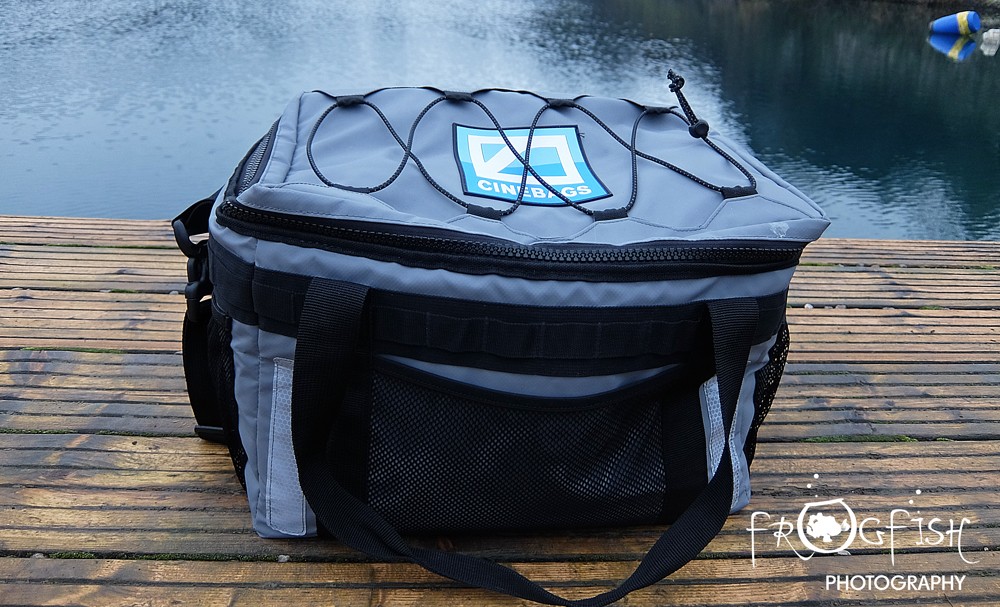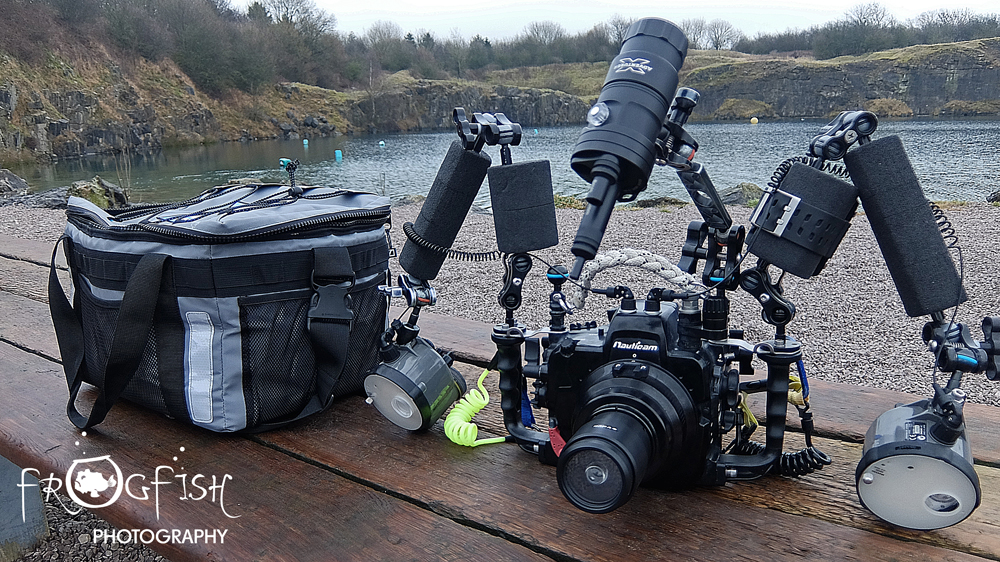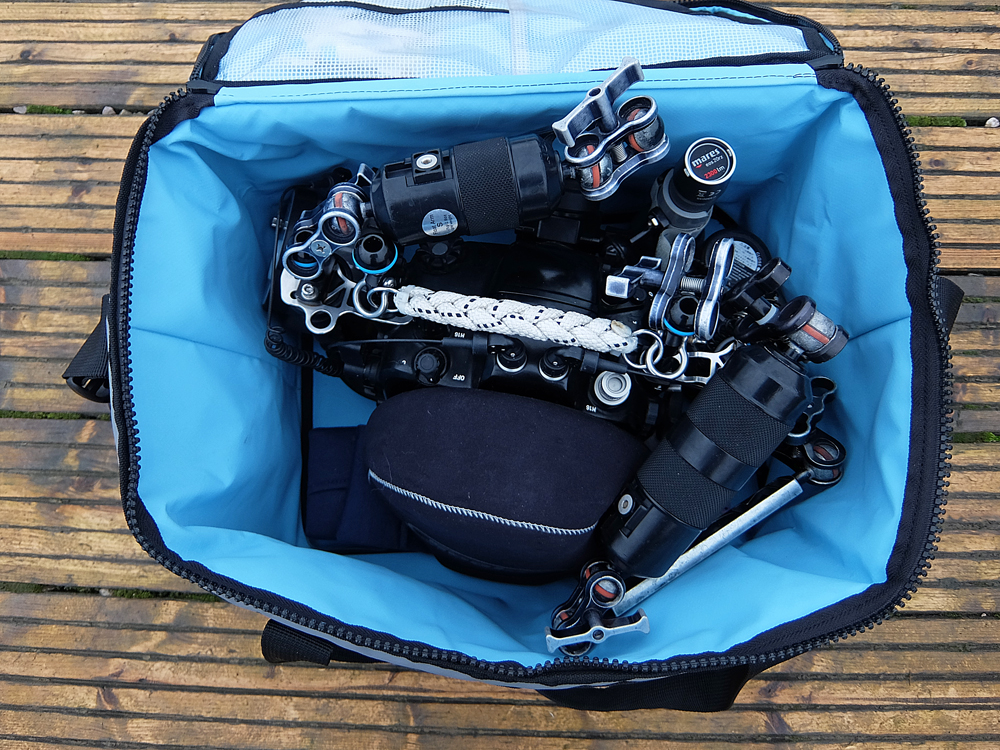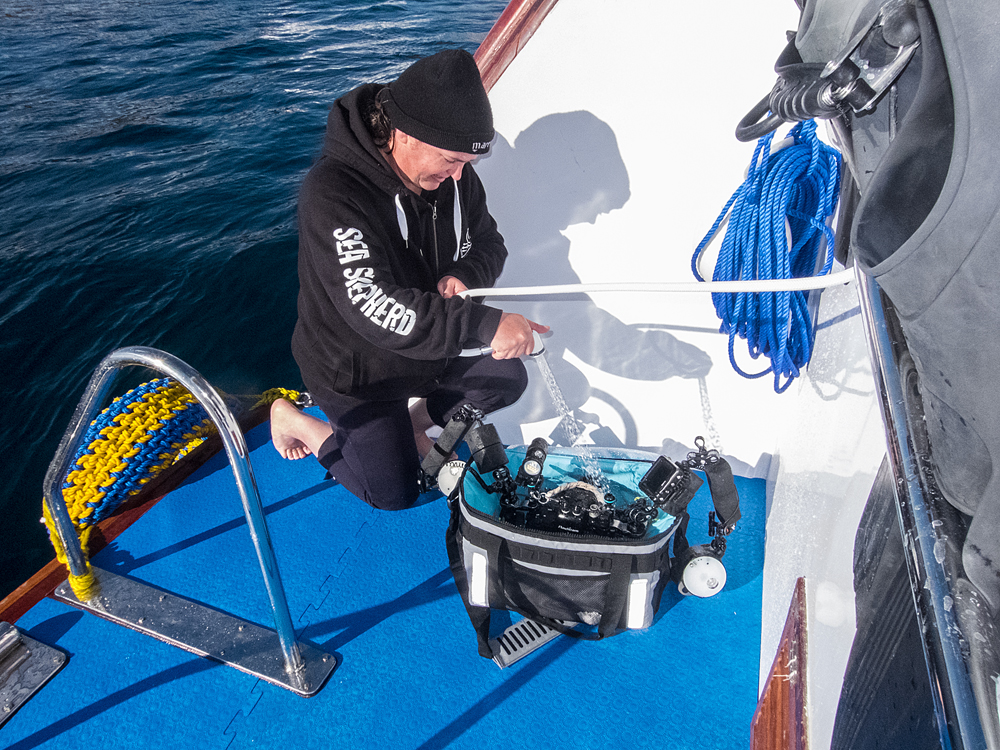News
S.U.P.E.R. Part 18: Cinebags CB70 Square Grouper

In our ongoing series S.U.P.E.R. (Scubaverse’s Underwater Photography Equipment Reviews), Scubaverse.com’s underwater photography editors Nick and Caroline Robertson Brown review new underwater photography equipment, general diving equipment, and some older favourites too.
For the eighteenth instalment of S.U.P.E.R., Nick and Caroline take a look at the CB70 Square Grouper from Cinebags.
We discovered Cinebags at DEMA 2016 and were instantly impressed with what we saw. They encouraged us to take one home with us to try out for ourselves, and with two trips – to Fiji and Sharm – coming up, along with several testing days in a U.K. quarry, this would be perfect timing to put this rugged bag through its paces.

The Cinebags CB70 is a large bag that has been designed to carry your full underwater camera setup, including lighting, as well as all the spares and bits and bobs you might want to take on a day of diving with your camera. We put Nick’s D800 in a Nauticam housing, with its glass dome port, arms, 2 INON Z-240 strobes and a couple of video lights in the main compartment of the bag, and it fitted with no problem at all! The bag is made out of heavy duty pvc tarpaulin material and is well padded. It really gives you peace of mind when you pop it on a boat, and you know it is in its own protective bag. No-one can brush their camera against yours on the camera table and you do not have to worry about accidentally knocking it as you walk to the dive boat. It makes carrying your underwater photography gear to the boat or shore much easier, using the tough yet comfortable handles or shoulder strap.

One of the features that we loved about this bag is all the extra little pockets, both on the inside of the lid, and on the outside of the bag. We put camera care equipment, like spares, grease, lens clothes on the inside pockets, and then our sun cream, sunglasses (or woolly hats and hand warmers) and other bits and bobs in the mesh pockets on the exterior. There are even cargo loops on the top of the lid to help keep all your gear in one place. The bag collapses down neatly, and the shoulder strap can be removed, so that it is easy to pack when you are heading home.
Another fantastic feature of this bag is that it is watertight. This means that whenever you have the CB70 with you, you also have your own personal camera rinse tank. Rather than adding your camera to the mass of others in the general rinse tank, risking damage to it and any lighting, you can simply grab a hose and ensure that your camera is kept safe in a padded rinse tank of its own. Even better, at diving locations where a rinse tank is difficult to access, you can put this under a shower or add water from any source when you return from your dive.

We have found the bag to be extremely useful on both overseas trips and whilst diving here at home. Not only does it keep your precious equipment safe whilst travelling to and from the dive site, walking, on a boat or in the car, when you are about to go diving, it is a great way to keep all your accessories in one place as you are about to get into the water too. Our lens hoods, towel, dive lights and anything we might not be taking on a particular dive gets tucked away in this versatile bag.
Cinebags also make a matching range of port pouches to keep all your glass safe whilst you travel too. The only sadness that I have about the Cinebags CB70 Square Grouper, is that we do not have two – so we are still arguing on who gets to use it each morning!
For more information visit www.cinebagsunderwater.com
For more from Nick and Caroline, visit www.frogfishphotography.com.
News
Book Review: Fire on Monroe Bravo by Fred Lockwood

Fire on Monroe Bravo is the latest book in the Jack Collier series by Fred Lockwood. Our story begins with our lead characters, Jack and Sandro, owners of Marine Salvage & Investigation Company, arriving on the Monroe Bravo Oil & Gas Platform in the North Sea. Having secured a contract for their vessel the MV Stavanger to act as support ship to the platform for TransGlobal Oil, our protagonists are on a celebratory visit.
However almost as soon as they arrive a series of explosions rock the platform, causing huge damage, loss of life and the very real danger of a massive human, ecological and financial disaster.

As the danger mounts for both our heroes and the surviving workers, Jack and Sandro will have to escape the inferno, all while trying to save the platform and the men still trapped unable to help themselves.
The disaster sets the scene for the unfolding story lines following the fate of the platform and our main characters, the police investigation into a suspected terrorist act and the actions of TransGlobal Oil as they attempt to navigate the pubic outcry and financial repercussions.
In his eighth book, Fire on Monroe Bravo, Fred Lockwood delivers an explosive thriller, with plenty of above and in-water drama, and our heroes fighting for survival, what more can you ask for?
We thoroughly recommend this read and look forward to the next in the series. For more information about his book series, you can check out the reviews of his previous books here on Scubaverse.
- Title: Fire On Monroe Bravo
- Author: Fred Lockwood
- ISBN: 979-8325324536
Available in a paperback version and for Kindle from Amazon and book stores.
Blogs
Alonissos: The complete diving destination (Part 1)

In June we were incredibly fortunate to be invited to dive in Alonissos, a small Greek Island in the Sporades island chain located in the North Aegean Sea. While I have long been a big fan of the Greek Islands as a great holiday destination, I had not had the opportunity to do any diving on previous visits and Mike and I were extremely excited to see what Alonissos had to offer both above and below the surface!

The Sporades are easily accessible via the airport in Skiathos (the first island in the chain), which is served by Jet2 flights from all major UK airports from May through October. Numerous ferries and charter boats make island hopping from Skiathos Town a breeze. After an hour boat ride, the picturesque port of Patitiri was a wonderful introduction to Alonissos, where we were met by our gracious hosts Kostas of Albedo Travel and Dias of Alonissos Triton Dive Center. Mike and I were delighted to be staying at the Paradise Hotel, aptly named for its stunning views over the sea and great location for walking to the waterfront.

Alonissos is beautifully situated in the National Marine Park of Alonissos and the Northern Sporades, the largest marine protected area in Europe. The surrounding seas offer fabulous marine life, including incredibly rare species such as the Mediterranean monk seal. They boast deep walls covered in gorgonians and sponges, stunning topography with caverns, swimthroughs and pinnacles, and the first accessible ancient shipwreck from 500BC!

In locations where historical sites have been reported, the waters are largely restricted, but with collaboration between government, underwater archeologists and dive centres, incredible underwater museums are being created for a truly unique diving experience. Alonissos is home to the first of these, the Ancient Shipwreck of Peristera Accessible Underwater Archeological Site. The chance to dive into history (along with reports of healthy reef life and amazing underwater topography) meant Mike and I were keen to get in the water.

Our introduction to the diving around Alonissos was at the Agios Georgios Pinnacles, in the channel between Alonissos and Skopelos. This fantastic site was named “The Chimney,’ and proved to have a huge amount to see. We got to a decent depth here (over 25m), and marvelled at a colourful reef wall with a wonderful swim through whose rocky walls were absolutely covered with life. As well as brilliant topography there was no shortage of macro life here. We saw numerous nudibranchs, five different species in total. The second dive at Mourtias reef nearby was a shallower dive along a nice wall with lots of crevices. Several moray eels and grouper called this site home. We enjoyed looking in the crevices for lobster and smaller benthic life, such as cup corals and tunicates.

Our itinerary allowed us two dives a day with afternoons left to explore the island with our hire car and evenings to enjoy the famous Greek hospitality. This proved to be a lovely mix of in-water and land based diversions.

The next days diving to the Gorgonian Gardens and Triton’s Cave was to be even better! These two stunning sites are nothing short of fabulous. The Gorgonian Gardens was a deep wall near to the Agios Georgios islands. The ever-present currents in this deep channel meant that the sea life was amazing … the namesake Gorgonian sea fans dotted the wall at a depth of 30 to 50 meters, getting ever larger the deeper we went. Above 30m was by no means less beautiful, with sponges, corals, scorpionfish, moray eels and some rare and colourful nudibranchs.

The second shallower dive of the day was to Triton’s Cave or the Cavern of Skopelos, on the east side of that island. The spectacular rock formations had wild striations both above and below the water making a truly epic topography. The cavern entrance was at 14m, and big enough for a buddy pair, winding up to 6m and passing two beautiful windows out into the blue. Emerging from the cavern, the light at the shallower depths and the incredible rock formations made for a fantastic gentle swimming safety stop and we all surfaced by the boat with massive grins.

Check out our next blog :Alonissos: The complete diving destination (Part 2)” to hear about our amazing dive on the 2500 year old Peristera Wreck!
Thanks to:
Alonissos Triton Dive Center https://bestdivingingreece.com/
Albedo Travel https://alonissosholidays.com/activities/
Paradise Hotel https://paradise-hotel.gr/
Alonissos Municipality https://alonissos.gr/en/
-

 Blogs2 months ago
Blogs2 months agoDiving With… Nico, Ocean Earth Travels, Indonesia
-

 News1 month ago
News1 month agoMurex Bangka Announce New Oceanfront Cottages & Beachfront Dining
-

 Blogs2 months ago
Blogs2 months agoA new idea in freediving from RAID
-

 Marine Life & Conservation1 month ago
Marine Life & Conservation1 month agoIceland issue millionaire whale hunter a licence to murder 128 vulnerable fin whales
-

 Marine Life & Conservation2 months ago
Marine Life & Conservation2 months agoThe Shark Trust Great Shark Snapshot is back
-

 News3 months ago
News3 months agoCharting New Waters; NovoScuba Goes Global with the Launch of their Revolutionary Dive Training Agency!
-

 Gear News1 month ago
Gear News1 month agoNew Suunto Ocean – a dive computer and GPS sports watch in one for adventures below and above the surface
-

 Marine Life & Conservation Blogs2 months ago
Marine Life & Conservation Blogs2 months agoBook Review: Plankton















